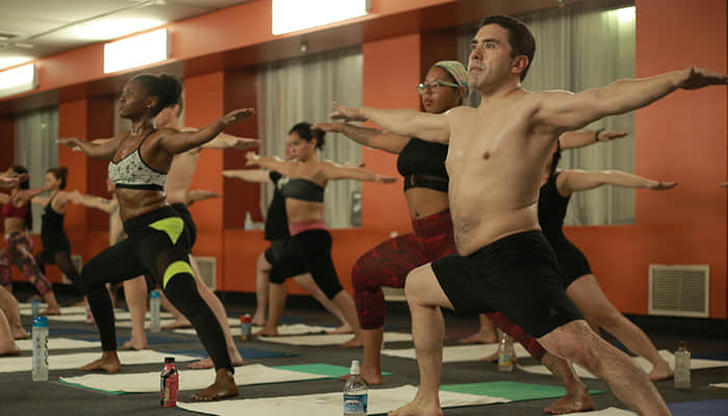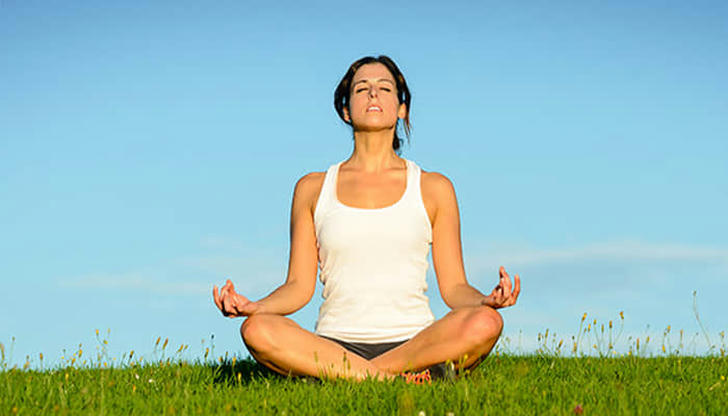8 Benefits of Hot Yoga

Yoga induces a sense of tranquility in your mind, directs your focus to controlled breathing, and integrates breath with movement across diverse poses.
Hot yoga has emerged as a prominent fitness trend over the past decade. This style of yoga involves practicing in a heated room, typically with temperatures ranging from 90 to 105 degrees Fahrenheit (32 to 40 degrees Celsius). The elevated temperature aims to boost flexibility and prompt sweating, believed to aid in the body's detoxification process.
The most well-known form of hot yoga is Bikram yoga, which was developed by Bikram Choudhury in the 1970s. A Bikram yoga class consists of a series of 26 postures and two breathing exercises, and it is always conducted in a room heated to a specific temperature.
The elevated temperature in hot yoga intensifies the practice, offering both physical and mental health advantages.
So, what are the specific benefits of hot yoga?
1. Enhancing Your Flexibility and Facilitating Deep Stretching:

In hot yoga, the increased temperature sets the stage for muscles to easily warm up, enabling the body to explore yoga poses more deeply. This not only enhances joint flexibility but also proves effective in injury prevention. The warmth promotes deep stretches, relieving muscle tension, expanding joint motion, and overall improving flexibility. Hot yoga offers a balanced approach, elevating flexibility while minimizing the risk of injuries, creating a safe and efficient workout environment for yoga enthusiasts.
2. Elevating Cardiovascular Well-being:

Hot yoga serves as a dynamic avenue for enhancing cardiovascular health. The elevated room temperature intensifies the practice, leading to an increased heart rate. This cardiovascular stimulus fortifies the heart muscle, improving its efficiency in pumping blood throughout the body. The heightened intensity also stimulates improved blood circulation, ensuring a more efficient delivery of oxygen and nutrients to vital organs. As a result, blood pressure regulation is positively impacted, contributing to a reduced risk of cardiovascular diseases. Engaging in hot yoga regularly not only strengthens the cardiovascular system but also fosters endurance and resilience, promoting enduring heart health benefits. The combination of heat and rigorous exercise creates an environment conducive to cardiovascular fitness, making hot yoga a holistic practice for heart well-being.
3. Inducing Sweating:

The elevated temperature in hot yoga classes stimulates the body to perspire profusely. Sweating is a natural and effective way for the body to regulate temperature and expel impurities. As practitioners engage in dynamic poses and sequences, the intensified heat prompts increased sweating, facilitating the removal of toxins and promoting a thorough cleanse of the skin's pores. This process contributes to physical detoxification and imparts a refreshing and rejuvenating feeling.
4. Accelerating Metabolism:

Hot yoga's high-intensity nature, coupled with the elevated room temperature, catalyzes boosting metabolism. The body responds to the heat by expending more energy, resulting in an accelerated metabolic rate. This heightened metabolic activity facilitates the efficient burning of calories, aiding in weight management and contributing to increased energy levels. The combination of intense physical exertion and elevated temperature creates an environment that optimizes metabolic processes, making hot yoga a beneficial practice for those seeking to enhance their metabolism and overall fitness.
5. Improving Posture:

Hot yoga plays a pivotal role in refining and enhancing body posture. The practice involves a series of poses that emphasize core strength, balance, and alignment. The elevated temperature in the studio promotes increased muscle flexibility, allowing individuals to work on correcting postural imbalances and adopting more ergonomic stances. As participants consistently engage in hot yoga, they develop a heightened sense of body awareness, fostering habits that contribute to improved posture not only during the practice but also in everyday activities. This heightened postural awareness can have lasting positive effects, promoting a more upright and aligned stance, reducing the risk of strain, and contributing to overall musculoskeletal health.
6. Enhance balance and coordination:

Hot yoga helps improve balance and coordination through a variety of poses and movements. Incorporating standing poses like Tree Pose and Warrior Pose, balancing poses such as Crane Pose and Angel Pose, inverted poses like Headstand and Handstand, smooth transitions between poses, and core training, hot yoga challenges and enhances the body's ability to maintain balance. These poses require distributing body weight, challenging balance, practicing smooth transitions, fostering muscle stability, and strengthening the core muscles. Hot yoga practice not only provides a balance challenge within yoga but also contributes to increased stability and flexibility in everyday life.
7. Alleviating Stress:

One significant benefit of hot yoga is its stress-relieving effects. The combination of focused breathing, meditation, and the warmth of the environment creates a calming atmosphere. This encourages the release of tension and promotes relaxation, helping practitioners unwind and alleviate stress accumulated from daily life. Hot yoga serves as a therapeutic practice that benefits both the body and contributes to mental and emotional well-being.
8. Improve Lung Capacity:

Hot yoga effectively enhances lung capacity through its combination of elevated temperatures and focused deep-breathing exercises. Within a hot yoga session, practitioners engage in various poses and deep-breathing patterns, not only enhancing the flexibility of the lungs but also expanding their overall capacity. The heightened temperature encourages a more profound engagement of the respiratory system, stimulating comprehensive lung function. This practice contributes to increased respiratory efficiency while improving oxygen absorption, providing the body with enhanced energy, and overall promoting the health of the respiratory system.
Safety Guidelines for Hot Yoga:

People with pre-existing conditions like migraines, asthma, heart issues, or certain medications should consult a healthcare professional before attempting hot yoga, ensuring personalized advice and precautions. Pregnant individuals are advised to avoid hot yoga due to the risk of overheating. It's crucial for those with injuries to consult professionals and inform yoga instructors before class. Safety is paramount in hot yoga, and personalized guidance is recommended for individuals with specific health concerns.

